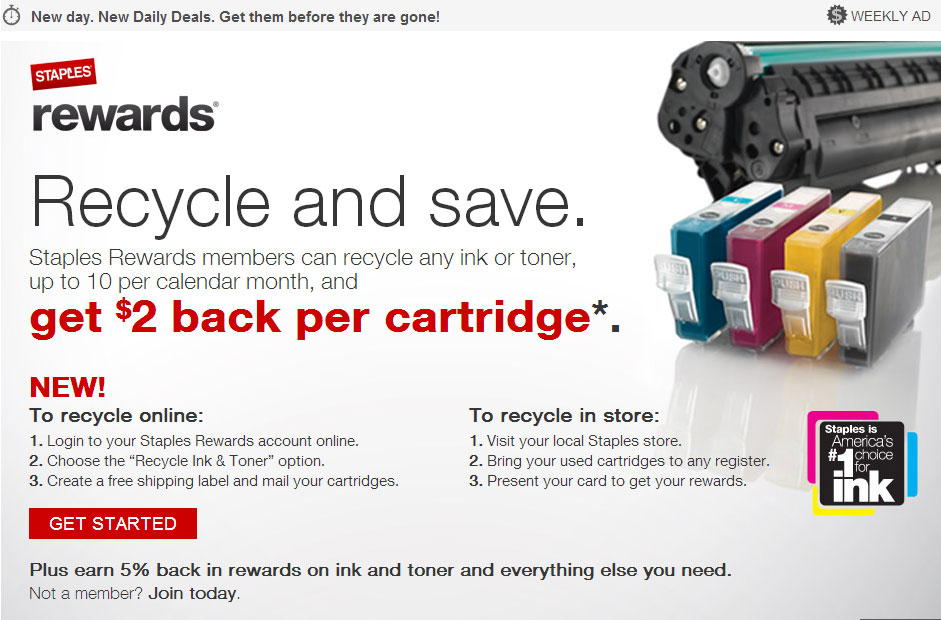
Over the weekend, I had a hot pot dinner with one of my good friends and over the course of the meal he brought up the topic of his excess electronics and surplus of store credit from the Staples Ink & Toner Rewards Program. Due to my friend’s fear of his career being jeopardized, I cannot disclose his name, profession, or name of his organization; however he is employed in an institution of higher learning.
My friend informed over the past couple years, he had been swiping bulk quantities of ink and toner cartridges from recycle bins in his place of employment and exchanging them at his local Staples store for rewards. My friend had been hitting the $60 maximum limit of Staples Rewards the last few months and had trouble deciding on what to spend the money on.
To my amusement, he informed me had nearly exhausted all the categories of products he could spend with Staples Rewards Things he has spent with his Staples Rewards included: compostable garbage bags, toilet paper, snacks, LED light bulbs, dish washing soap, printer paper, desktop expansion cards, ethernet cables, and more.
In addition, my friend is very egotistic. He told me that his latest use of Staples Rewards involved buying CAT 7 cables and the reason so was to burn his extra cash as well as to increase his internet connection speed and his “efficiency.” I attempted to explain to him he wouldn’t experience any increased internet speeds because his ISP, Comcast was delivering to him an average of 16 Mbps download speed with a cap of about 25 Mbps and in respects to that CAT 5E cables can go up to 100 Mbps in data transfer. A CAT 7 cable supposedly can go up to 10,000 Mbps in data transfer, but obviously no speed near that can be achieved with an internet connection capped at about 25 Mbps — my friend just refused acknowledge that due to his ego.
Furthermore, because my friend was loaded with extra money and excess computer components, he was generous enough to give me some of his older USB 2.0 hubs and CAT 5E cables.